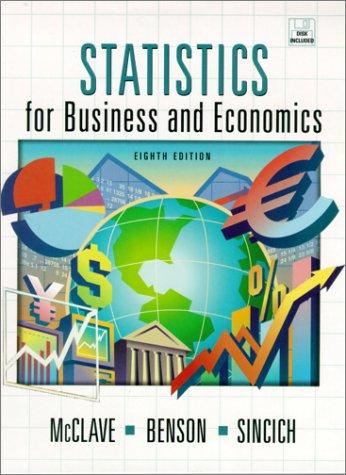When searching for an item (e.g., a roadside traffic sign. a misplaced file, or a tumor in
Question:
When searching for an item (e.g., a roadside traffic sign.
a misplaced file, or a tumor in a mammogram), common sense dictates that you will not re-examine items previously rejected. However, researchers at Harvard Medical School found that a visual search has no memory (Nature, Aug. 6, 1998). In their experiment.
nine subjects searched for the letter "T" mixed among several letters "L." Each subject conducted the search under two conditions: random and static. In the random condition, the location of the letters were changed every 111 milliseconds; in the static condition, the location of the letters remained unchanged. In each trial, the reaction time (i.e., the amount of time it took the subject to locate the target letter) was recorded in milliseconds.
a. One goal of the research is to compare the mean reaction times of subjects in the two experimental conditions. Explain why the data should be analyzed as a paired-difference experiment.
b. If a visual search had no memory, then the main reaction times in the two conditions will not differ. Specify H,, and Ha for testing the "no memory" theory.
c. The test statistic was calculated as t = 1.52 with p-value = .15. Make the appropriate conclusion.
Step by Step Answer:

Statistics For Business And Economics
ISBN: 9780130272935
8th Edition
Authors: James T. McClave, Terry Sincich, P. George Benson





